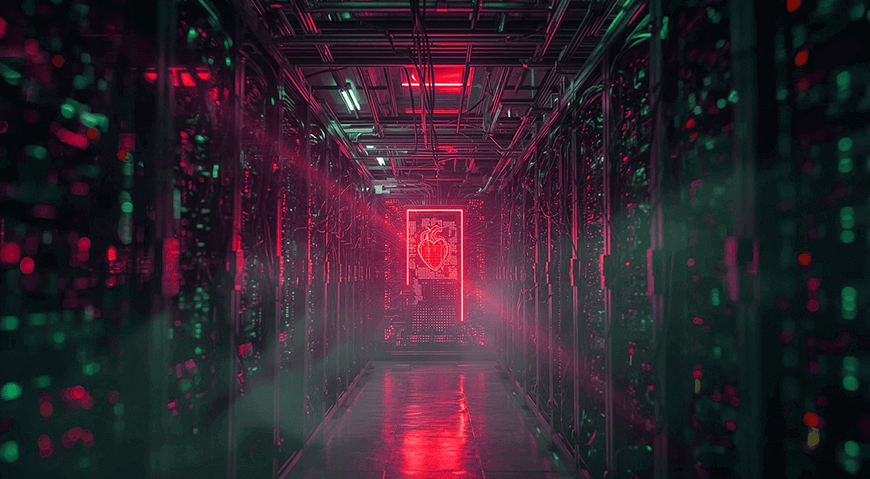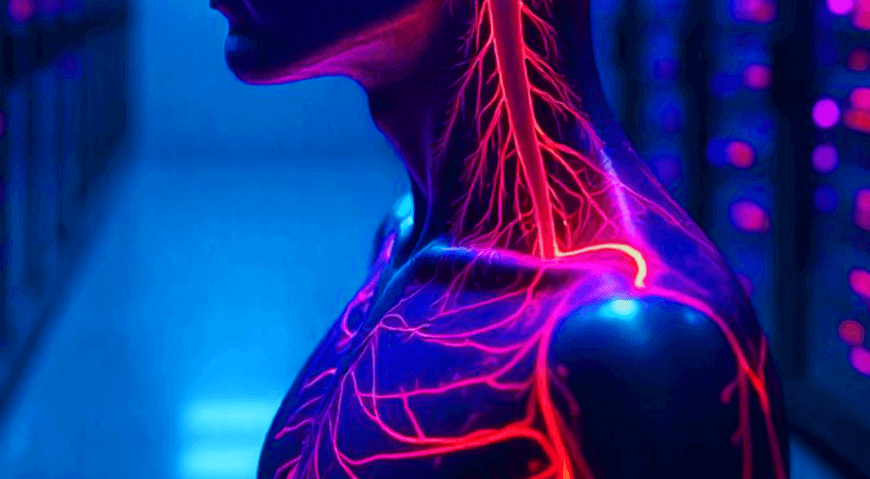The Digital Heart: Key Components of a Data Center
In our previous article, we introduced the concept of data centers and their vital importance in the
current digital landscape. Today, we will delve into the anatomy of these impressive facilities,
breaking down each of the essential components that enable their operation.
A modern data center is an engineering masterpiece where each element plays a
critical role within a highly complex technological ecosystem. Understanding these components is
fundamental for any organization considering implementing, updating, or managing
IT infrastructure at scale.

1. Servers: The Heart of the Data Center
Servers represent the computational core of any data center, providing the
processing power needed to run applications and services. These machines are designed
specifically to operate 24/7 with high levels of performance and reliability.
Types of servers by form factor:
-
Rack servers: Designed to be mounted in standard 19-inch racks,
optimizing vertical space. They typically occupy between 1U and 4U of space (where 1U = 1.75 inches
of
height).
-
Blade servers: Ultra-compact modules that are inserted into a common chassis,
sharing power and cooling. They offer higher computational density per square meter.
-
Tower servers: Similar to desktop computers but with enterprise-grade
components. Less common in large facilities.
-
Mainframes: Large-scale computers designed for massive processing and
critical applications in large organizations.
Specialized configurations:
-
Application servers: Optimized to run specific software.
-
Database servers: With abundant memory and high-performance storage.
-
Virtualization servers: With multiple processors and a large amount of RAM to
host numerous virtual machines.
-
High-Performance Computing (HPC) servers: For complex scientific or
engineering calculations.
The current trend is towards hyper-convergence, where computing, storage, and networking are
integrated into modular devices that can be easily scaled according to business needs.

2. Storage Systems: Preserving the Digital Asset
Storage is one of the most critical resources in a data center, housing everything from
transactional data to backups and historical archives.
Main storage technologies:
-
Direct-Attached Storage (DAS): Devices connected directly to a server.
-
Storage Area Network (SAN): A dedicated network to consolidate block-level
storage resources.
-
Network-Attached Storage (NAS): Specialized devices that provide
file-level storage over the network.
-
Object Storage: Optimized for unstructured data and massive scalability.
Storage media:
-
Solid-State Drives (SSD): Offer the highest speed and endurance, ideal
for intensive workloads.
-
Hard Disk Drives (HDD): Higher capacity at a lower cost, suitable for
secondary storage.
-
Tape systems: Used primarily for long-term archiving and backup.
-
All-Flash Storage: Facilities that exclusively use SSDs to
maximize performance.
Modern storage systems incorporate advanced features such as deduplication,
compression, snapshots, and replication to optimize both space utilization and data protection.
3. Network Infrastructure: The Nervous System of the Data Center
The network connects all the components of the data center to each other and to the outside world,
being
fundamental to its operation.
Main components:
-
Access switches: Connect individual servers to the data center network.
-
Aggregation switches: Connect multiple access switches, consolidating
traffic.
-
Core switches: Form the backbone of the network, managing traffic
between different zones.
-
Routers: Connect the data center to external networks and the Internet.
-
Load balancers: Distribute traffic among multiple servers.
-
Firewalls and intrusion prevention systems: Protect the network against
external threats.
Network architectures:
-
Traditional three-tier topology: Access, aggregation, and core.
-
Spine-Leaf: A scalable architecture where each "leaf" connects to each "spine,"
reducing latency.
-
SDN (Software-Defined Networking): Allows the network to be managed and
programmed through
software.
Modern data center networks typically operate at speeds of 10/25/40/100 Gbps, with a trend
towards 400 Gbps in cutting-edge facilities.

4. Power Systems: The Life Force
A data center requires a constant and stable power supply. Any interruption can
be catastrophic for business operations.
Main components:
-
Electrical service entrance: Main connection to the power grid, ideally
redundant
from independent substations.
-
Transformers: Adapt the grid voltage to the levels required by the
equipment.
-
Distribution boards: Distribute power to the various circuits of the data
center.
-
Uninterruptible Power Supply (UPS) systems: Provide instantaneous power
during outages using batteries.
-
Diesel generators: Take over the load during prolonged outages.
-
PDUs (Power Distribution Units): Distribute power at the rack level.
-
ATS (Automatic Transfer Switches): Automatically switch between power
sources.
The design of the electrical infrastructure is based on the principle of N+1, 2N, or 2N+1
redundancy, depending on the required availability level.
5. Cooling Systems: Fighting the Heat
IT equipment generates significant amounts of heat during operation. Maintaining
adequate temperatures is essential for the reliability and longevity of the components.
Cooling technologies:
-Air cooling:
-
CRAC (Computer Room Air Conditioning): Traditional units that cool the
room's air.
-
Hot/cold aisle containment: Physically separates the cold intake air
from the hot exhaust air.
-
In-row cooling: Units located directly between the racks.
-
Rack-level cooling: Specific solutions for high-density racks.
- Liquid cooling:
-
Immersion cooling: Servers are submerged in a dielectric liquid.
-
Direct-to-chip liquid cooling: Tubes with coolant connected directly
to the processors.
-
Cold plates: Systems that use refrigerated metal plates to absorb
heat.
Current trends point towards higher operating temperatures (following ASHRAE
guidelines) and free cooling techniques that take advantage of environmental conditions to
reduce energy consumption.
6. Physical Security: Protecting Material Assets
Physical security protects equipment against unauthorized access, sabotage, and natural
disasters.
Security elements:
-
Perimeter access control: Fences, barriers, and surveillance systems for the
outer perimeter.
-
Biometric systems: Fingerprint, iris, or facial recognition scanners.
-
Proximity cards: RFID systems to control access to restricted areas.
-
CCTV cameras: Continuous monitoring of all areas.
-
Sensors: Motion detectors, door opening detectors, and presence detectors in
unauthorized areas.
-
Cages and safes: For particularly sensitive equipment.
-
Fire detection and suppression systems: Specifically adapted for
technological environments.
-
Water protection: Drainage systems, leak detection, and elevated placement
of equipment.
Physical security is implemented in concentric layers, increasing the level of restriction
according to the criticality of the assets.
Component Orchestration: DCIM and Centralized Management
Data Center Infrastructure Management (DCIM) systems allow for the monitoring and control
of all components from a unified platform. These systems provide:
- Real-time monitoring of all critical parameters.
- Space and capacity management.
- Planning and simulation of changes.
- Predictive analysis to anticipate failures.
- Thermal and airflow management.
- Energy efficiency reports.
Final Considerations: The Balance Between Components
A well-designed data center maintains a balance between all its components. It is useless to have
state-of-the-art servers if the network or power system cannot support their demand. Holistic
planning is essential to avoid bottlenecks and ensure a
harmonious infrastructure.
At the same time, modularity and scalability must be design considerations from the outset,
allowing the data center to evolve according to business needs without operational
interruptions.

